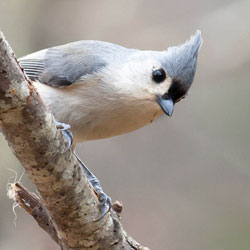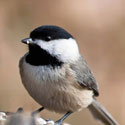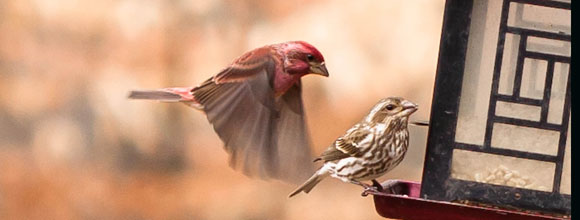Bird Houses
 One of the great joys of birding is to see birds successfully raise their young in your own backyard. Many birds will gladly move into a well designed and properly placed bird house (or nest box).
One of the great joys of birding is to see birds successfully raise their young in your own backyard. Many birds will gladly move into a well designed and properly placed bird house (or nest box).
You'll find many decorative birdhouses for sale, but there are certain practical matters that need to be considered if you really want birds to build nests in the houses you provide.
See a list of birds that will nest in nest boxes
Tips for Selecting Bird Houses
Successful bird houses are built for a specific bird. Decide which birds you want to attract to your yard and purchase or make your birdhouse accordingly.
Wood is probably the best material for birdhouses. Cypress and cedar are good choices because they weather well. Pine is acceptable, but won't last as long.
Avoid houses made with shiny materials such as metal roofs. The reflective surfaces can attract predators.

Nest boxes should have ventilation. This can be achieved through leaving gaps between the sides of the box and the roof or by drilling holes in the sides just below the roof.
Nest boxes should have drainage in the floor.
A rough surface on both the inside and outside of a nest box makes it easier for birds to get in and out.
Nest boxes should not have perches on the outside below the entrance hole. Perches give predators access to the birds in your birdhouse.
Top opening nest boxes provide easiest access for checking on birds without disturbing the nest.
A predator guard is often a thick block of wood at the entrance hole. A predator guard deepens the entrance hole and makes it more difficult for a raccoon or cat to get its arm inside the box. Predator guards made of sheet metal will keep squirrels out of your nest boxes.
Inspecting Nest Boxes
You should check on your nest boxes periodically - once a week is good. Check the box for unwanted inhabitants such as squirrels, mice, snakes, and insects. Here is a good way to perform a nest box check: Watch the nest box for 20 - 30 minutes. If you don't see or hear any birds near the box, go over and tap on the box. If you hear bird sounds, open the top and take a quick look inside. If everything is all right, close the box. If you find parasites or predators, remove them and close the box.
Top opening nest boxes provide the easiest access for checking on birds without disturbing the nest. Sometimes nestlings will jump out of the box when you open a side or front opening box. If a baby bird jumps out of the nest, pick the bird up and put it back in the nest. It is a myth that adults will reject a nestling that has been handled by humans.
Cleaning out your nest boxes after each brood has fledged may encourage other pairs to use the same box. Leaving your nest boxes out over the winter provides a shelter for birds during the cold months. Each spring, thoroughly clean out any nest boxes that have been left out for the winter.

